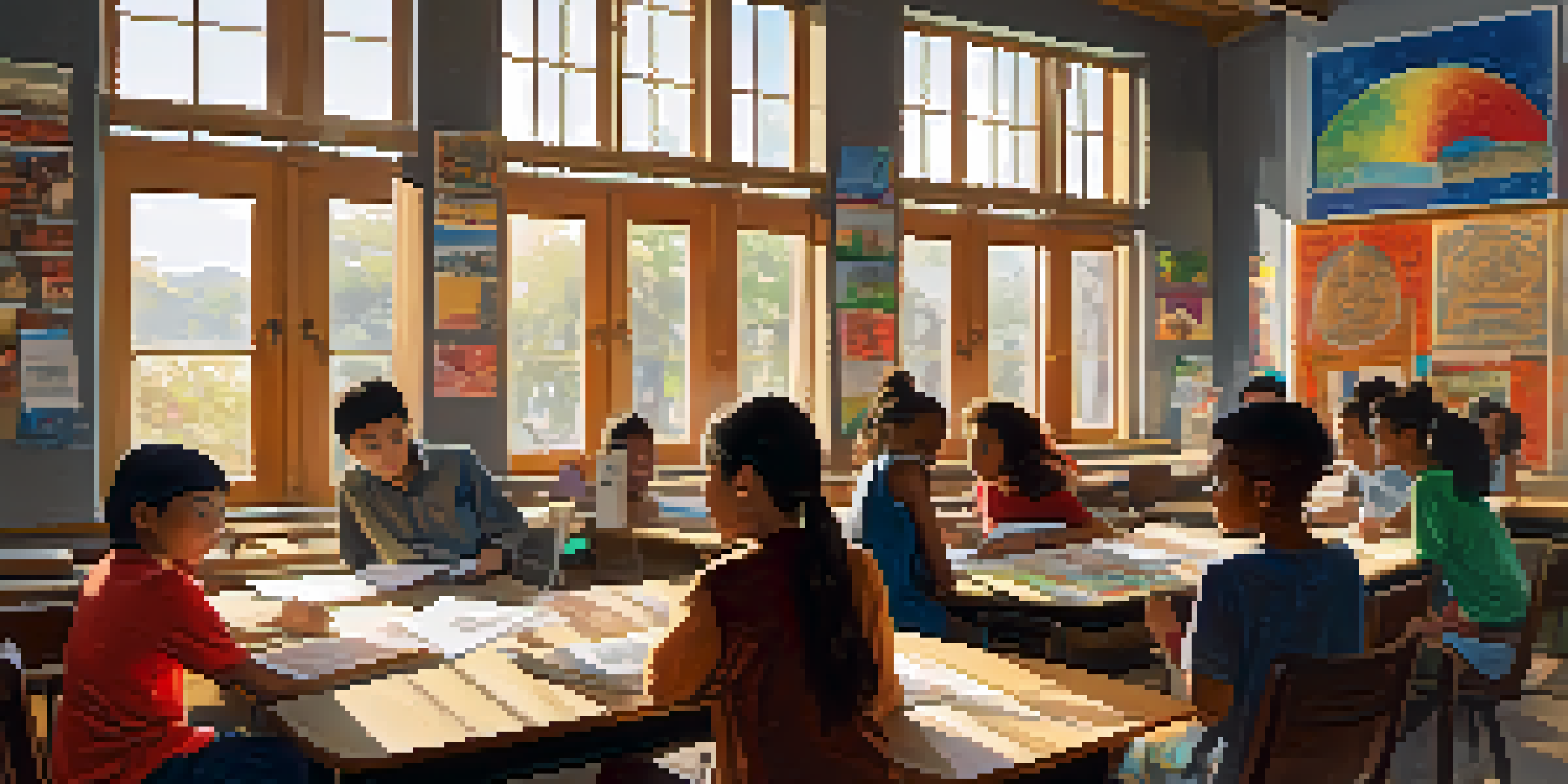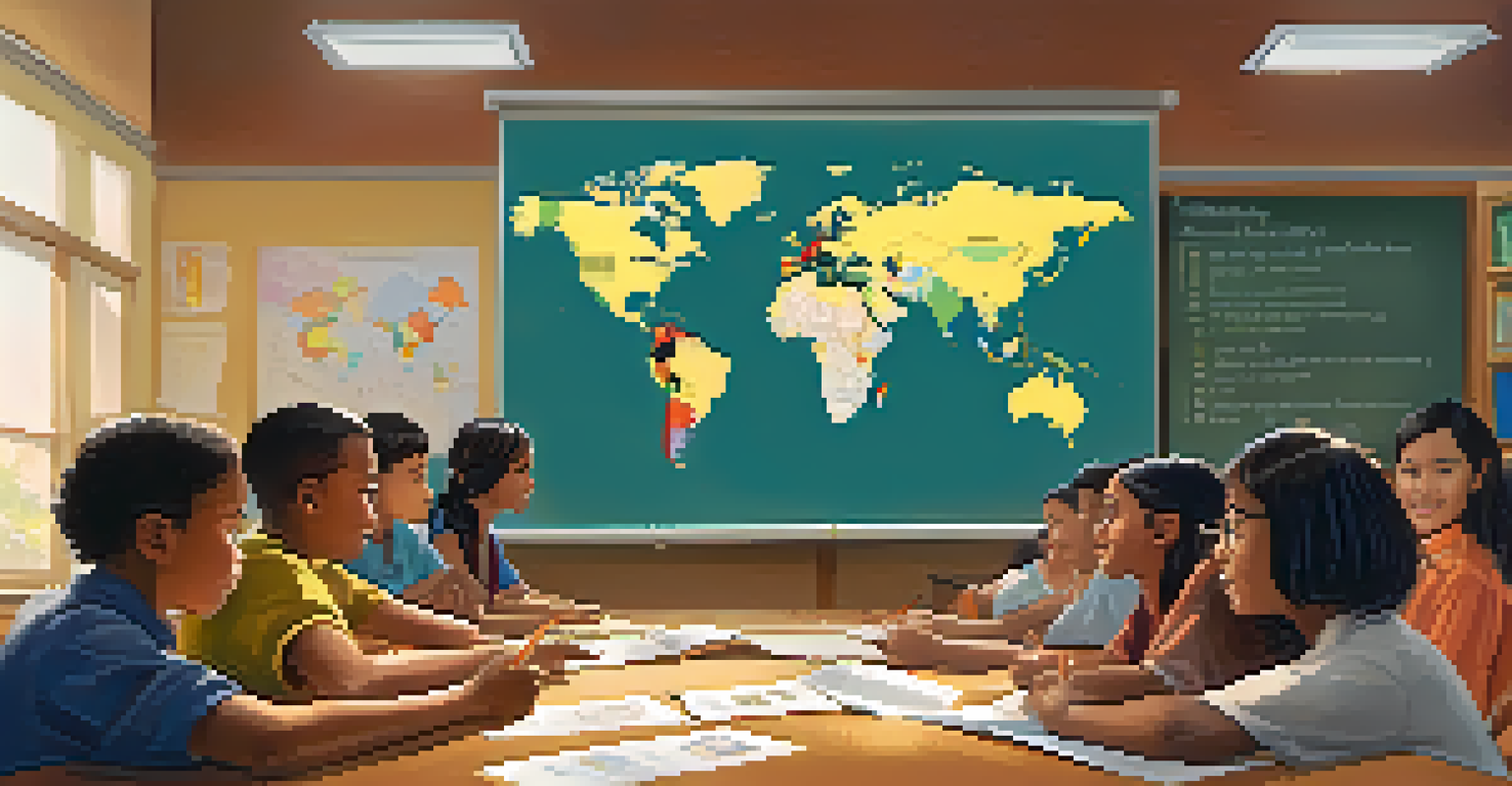Building Relationships Across Cultural Boundaries in Schools

Understanding Cultural Diversity in Educational Settings
Cultural diversity in schools is a beautiful tapestry of backgrounds and experiences. Each student brings unique perspectives shaped by their cultural heritage, which can enrich the learning environment. Understanding this diversity is crucial for educators, as it lays the foundation for building respectful and inclusive relationships among students.
Diversity is not about how we differ. Diversity is about embracing one another's uniqueness.
When teachers acknowledge and celebrate different cultures, they create an atmosphere where everyone feels valued. This can be as simple as incorporating diverse literature into the curriculum or recognizing various cultural holidays. Such efforts not only promote inclusivity but also encourage students to share their backgrounds, fostering empathy and understanding.
Moreover, embracing cultural diversity helps students develop essential life skills, such as adaptability and open-mindedness. These skills are vital in our increasingly globalized world, where collaboration across cultural boundaries is commonplace. Schools that prioritize understanding cultural diversity prepare students to thrive in diverse environments, both academically and socially.
The Role of Educators in Fostering Relationships
Educators play a pivotal role in bridging cultural gaps within the classroom. By actively engaging with students from diverse backgrounds, teachers can create a safe space for open dialogue and connection. This involvement can take many forms, from one-on-one conversations to group projects that encourage collaboration among students with different perspectives.

Another effective strategy is for educators to incorporate culturally relevant teaching practices into their lesson plans. This approach not only makes learning more relatable for students but also builds mutual respect among peers. For instance, discussing historical events from multiple cultural viewpoints can help students appreciate the complexity of different narratives.
Embrace Cultural Diversity
Understanding and celebrating cultural diversity in schools enriches the learning environment and fosters empathy among students.
Additionally, professional development opportunities focused on cultural competency can empower educators to navigate and celebrate diversity effectively. By equipping teachers with the tools to engage with their students' cultural backgrounds, schools can foster a more inclusive environment that benefits everyone involved.
Encouraging Student Participation and Expression
Encouraging students to participate actively in discussions about their cultures can significantly enhance relationship-building. When students share their traditions, values, and experiences, they contribute to a richer learning experience for everyone. This practice not only validates their identities but also fosters curiosity and respect among peers.
In a multicultural society, the best way to learn about each other is to share our stories.
Creating platforms for students to express themselves, such as cultural fairs or storytelling sessions, can bring diverse cultures to the forefront. These events allow students to showcase their heritage while also learning about others. Such initiatives help break down barriers, as students often find common ground through shared stories and experiences.
Moreover, when students feel empowered to share their identities, it promotes a sense of belonging in the school community. This feeling of inclusion can lead to stronger friendships and collaborations, enhancing the overall educational experience. Ultimately, when students connect on a cultural level, they contribute to a more harmonious and supportive school environment.
Creating Inclusive Curriculum and Activities
An inclusive curriculum is vital for fostering relationships across cultural boundaries. By integrating diverse perspectives into lesson plans, educators can ensure that all students see themselves reflected in what they learn. This might involve including authors from various backgrounds or exploring historical events from multiple angles.
Additionally, schools can offer extracurricular activities that celebrate cultural diversity, such as clubs, workshops, or performances. These activities not only allow students to engage with different cultures but also help build friendships that transcend cultural differences. It’s a chance for students to connect over shared interests while appreciating each other's unique backgrounds.
Educators Bridge Cultural Gaps
Teachers play a crucial role in creating inclusive classrooms by engaging with diverse backgrounds and incorporating culturally relevant practices.
Moreover, collaborating with parents and community members can enhance the inclusivity of the curriculum. Inviting guest speakers or organizing cultural exchange days can provide students with firsthand experiences of different cultures. This collaboration strengthens community ties and enriches the educational experience for all.
Addressing Cultural Misunderstandings Constructively
Cultural misunderstandings can sometimes arise in diverse classrooms, but addressing them constructively is key to building relationships. When such situations occur, it’s essential for educators to facilitate open discussions that allow students to voice their thoughts and feelings. This approach not only resolves misunderstandings but also promotes empathy and learning.
For instance, if a cultural faux pas happens, teachers can use it as a teaching moment. By helping students understand the underlying cultural significance of certain behaviors or practices, they can foster greater awareness and respect. This proactive approach encourages students to learn from their mistakes rather than feel discouraged by them.
Furthermore, creating a classroom culture where mistakes are viewed as opportunities for growth can enhance trust among students. When students feel safe to express themselves without fear of judgment, they are more likely to engage openly with their peers. This trust forms the bedrock of meaningful relationships that cross cultural boundaries.
Building Community Connections Beyond the Classroom
Schools can enhance cultural relationships by fostering connections with the local community. Engaging with community organizations that focus on cultural diversity can provide valuable resources and support for students and families. These partnerships can also create opportunities for students to participate in cultural events outside the classroom.
For example, organizing field trips to cultural festivals or local museums can offer students hands-on learning experiences that deepen their understanding of different cultures. Such outings not only enrich the curriculum but also allow students to bond over shared experiences, strengthening their relationships.
Community Connections Matter
Building relationships with local communities enhances cultural understanding and provides students with valuable experiences beyond the classroom.
Additionally, involving families in school activities fosters a sense of community. Encouraging parents to share their cultural practices or contribute to school events can create a more welcoming atmosphere. This collaboration reinforces the idea that cultural diversity is a shared strength, building a supportive community around students.
Measuring Success and Continuous Improvement
To ensure that efforts to build relationships across cultural boundaries are effective, schools must establish metrics for success. This might involve gathering feedback from students and parents about their experiences and perceptions of inclusivity. Regular evaluations can help identify areas for improvement and celebrate successes.
Additionally, schools can track student engagement in culturally diverse activities and monitor the impact on relationships among peers. For example, observing increased participation in multicultural events can indicate a growing appreciation for diversity within the school culture. Such insights can guide future initiatives and foster a more inclusive environment.

Ultimately, fostering relationships across cultural boundaries is an ongoing journey. By committing to continuous improvement and being responsive to the needs of the community, schools can create a nurturing environment that values diversity and supports every student’s growth.